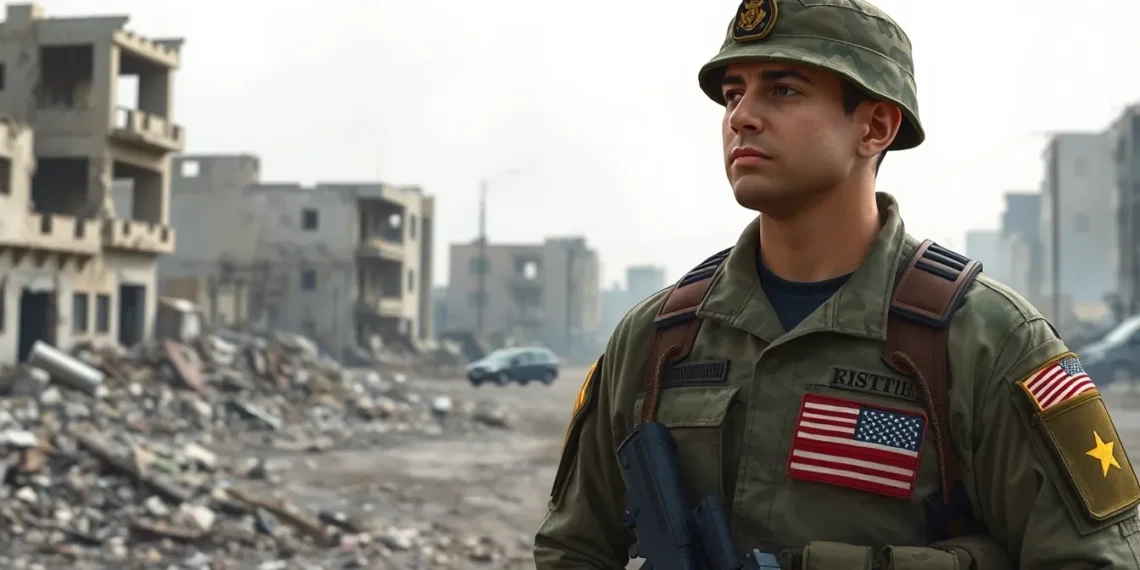The War on Terror has been a costly endeavor, both in terms of dollars and lives. But have you ever paused to wonder just how much this global campaign has drained from the coffers? Spoiler alert: it’s a staggering amount that could fund a lifetime supply of avocado toast for every millennial in America.
From military operations to homeland security measures, the expenses have piled up like laundry on a Sunday afternoon. As the world grapples with the aftermath, understanding the financial toll is crucial. Buckle up, because diving into the numbers reveals not just the cost of conflict, but the profound implications for future generations.
Overview of the War on Terror
The War on Terror began in the early 2000s as a response to the September 11 attacks. Numerous military operations were launched across Afghanistan and Iraq to dismantle terrorist networks. Significant financial investments were made to support these operations, with estimates suggesting costs exceeding $8 trillion by 2021. This figure includes military expenditures, veterans’ care, and homeland security measures.
Military spending accounts for a substantial portion of this total. Active-duty personnel, equipment, and base operations contribute to the ongoing financial burden. Regularly, Congress allocates funds to sustain military operations, impacting the national budget and future fiscal policies.
Human costs also play a critical role in understanding the overall impact. Thousands of service members lost their lives, and many more sustained injuries, both physical and psychological. Civilian casualties in affected regions further complicate this narrative, emphasizing the human toll of prolonged conflict.
Economic repercussions extend beyond immediate military expense. Greater domestic spending on security and counterterrorism measures affects various sectors, influencing public resources allocated for healthcare, education, and infrastructure. Prolonged military engagement strains international relations and influences global perceptions of the United States.
While the War on Terror aimed to enhance national security, the financial reality presents a complicated picture. Decisions made during this campaign shape policies and priorities for future generations. Understanding the full scope of these costs provides critical insight into national and international security dynamics, highlighting the need for comprehensive evaluation and accountability.
Financial Costs of the War on Terror
The financial toll of the War on Terror is substantial and multifaceted, reflecting the extensive resources dedicated to military, security, and reconstruction efforts.
Military Spending
Military spending dominates the financial landscape of the War on Terror. With costs surpassing $8 trillion by 2021, this figure encompasses direct military operations, equipment, and personnel. Annual appropriations from Congress continually support ongoing missions in Afghanistan and Iraq. Equipment purchases and maintenance also contribute to rising expenditures. Large allocations for veterans’ care add to the cumulative financial burden. Exploring specific allocations reveals the long-term impact on national budgets and fiscal health.
Humanitarian Aid and Reconstruction
Humanitarian aid and reconstruction expenses represent another significant aspect of financial costs. Billions have been invested in rebuilding war-torn nations, aiming to stabilize regions affected by conflict. Programs focus on infrastructure development, education, and healthcare access. Aid recipients include both governments and local communities in Afghanistan and Iraq. These efforts strive to create a sustainable environment after military interventions. Evaluating the effectiveness and long-term benefits of these expenditures remains vital. Overall, humanitarian aid efforts reflect the complexities of post-conflict recovery and the associated financial implications.
Economic Impact on the US
The War on Terror generated significant economic consequences, influencing federal budgets and the overall economy. Analyzing these aspects reveals the extensive repercussions of military and security expenditures.
Budget Deficits and Debt
Budget deficits increased due to soaring military spending and homeland security costs. By 2021, cumulative expenditures surpassed $8 trillion, impacting national debt levels. Federal allocations for military operations and veterans’ care directly affected fiscal policies. Legislative decisions contributed to annual deficits that burdened future generations. Higher debt levels strained public finances, restricting investments in essential services like education and healthcare. Long-term considerations noted the lasting impact on economic stability and growth potential.
Effects on the Economy
The economy experienced diverse effects stemming from the War on Terror. Increased military expenditures placed pressure on federal and state budgets. Public resources were diverted toward security initiatives instead of infrastructure and social programs. Economic growth suffered due to reduced investments in the private sector and missed opportunities. Job creation in sectors beyond defense declined as focus shifted toward military-related industries. Ultimately, the financial commitment to counterterrorism altered priorities, complicating recovery efforts and reducing overall economic resilience.
Cost to Global Alliances
The War on Terror significantly impacted global alliances. Financial contributions from allied nations played a crucial role in supporting military operations and humanitarian efforts.
Contributions from Allied Nations
Allied nations committed approximately $1 trillion towards military and reconstruction efforts in Afghanistan and Iraq. Contributions differed with many countries providing troops and resources, enhancing operational capacity. NATO allies also offered logistical support and intelligence sharing, strengthening collective defense strategies. Countries in the coalition, such as the United Kingdom and Australia, actively participated by deploying forces and resources. These contributions demonstrated solidarity among partners, highlighting the collaborative effort against terrorism.
Long-Term Financial Commitments
Long-term financial commitments place continuous pressure on national budgets. Estimates indicate that allied nations face ongoing obligations exceeding $200 billion for veteran care and security measures. Maintaining a presence in conflict zones incurs significant costs, complicating future fiscal planning. Continued military aid and partnership programs extend the financial impact, affecting domestic budgets for education and healthcare. Each country’s defense spending reflects a prioritization of security amidst evolving threats, influencing global geopolitical dynamics. The financial landscape continues to evolve, requiring an ongoing evaluation of strategic alliances and their financial implications.
Human Costs Associated with the War
The human costs of the War on Terror extend far beyond financial evaluations. Loss of life and injuries have dramatically altered countless lives and families.
Casualties and Injuries
Thousands of service members lost their lives during the War on Terror, with estimates placing military fatalities at over 7,000. Injuries sustained in combat exceed 50,000, with many service members facing lifelong disabilities. Civilian casualties also reached staggering figures, with estimates suggesting over 400,000 non-combatant deaths in affected regions. These losses reflect the extensive human toll resulting from prolonged military engagements in Afghanistan and Iraq. Each statistic represents lives impacted, families shattered, and communities disrupted.
Psychological Impact on Veterans
Mental health repercussions are significant among veterans returning from combat. Conditions such as post-traumatic stress disorder (PTSD) affect around 20% of veterans who served in Iraq and Afghanistan. Many veterans experience depression, anxiety, and other psychological issues, complicating their reintegration into civilian life. The Veterans Administration reports ongoing-care costs for such mental health conditions reach billions annually. Support programs are essential to alleviate these burdens, but access and funding can vary widely. Each veteran’s struggle underscores the need for comprehensive mental health resources tailored to their unique experiences.
The Need for a Balanced Approach
The financial and human costs of the War on Terror are staggering and complex. With over $8 trillion spent and countless lives lost or affected, the implications of this campaign will resonate for generations. As the U.S. navigates its post-conflict landscape, the impact on national priorities and public resources is evident. The ongoing evaluation of these expenditures is crucial for understanding how they shape future policies and security strategies. The lessons learned from this extensive commitment underscore the importance of accountability and the need for a balanced approach to national and global security.







